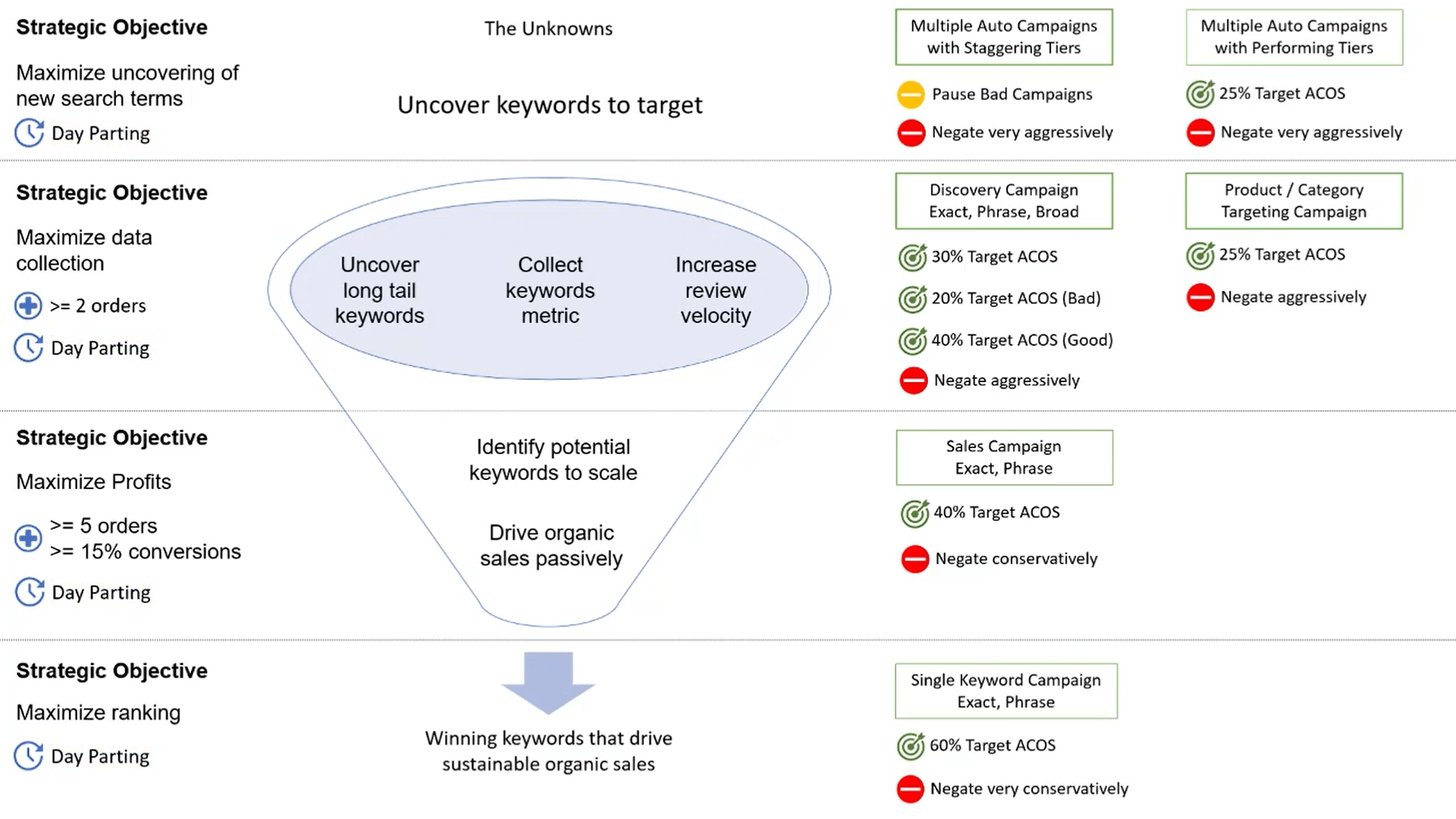- 27 Aug 2022
- 1 Minute to read
Scaling blueprint
- Updated on 27 Aug 2022
- 1 Minute to read
Our 8-figure advertising blueprint video describes a funnel consisting of 4 stages.

Some of the preset strategic objectives model after the funnel, where keywords move increasingly downward from stage 1 to stage 4, the better they convert.
Stage 1: Objective to maximize uncovering of unknown search terms
The top of the funnel focuses on uncovering untapped opportunities.
It aggregates data from multiple ads to collect performance statistics fast, enabling it to analyze a bigger pool of data points to make optimization decisions faster.
It negates very aggressively minimizing spending per search term to channel the budget towards uncovering new search terms.
Stage 2: Objective to maximize data collection of known keywords
Once a search term has generated sales, the strategic objective creates them as new keywords/targets in manual campaigns.
In this stage, the focus is to generate long tails and collect keyword advertising metrics.
It negates aggressively and reduces bids of poor-converting keywords to avoid unnecessary ad spending.
Stage 3: Objective to drive profits
Once a search term has generated decent sales with good conversion, the strategic objective will graduate them to Stage 3 as new keywords in another campaign.
In this stage, the focus is to drive traffic slightly more aggressively to increase profits, as keywords have a higher potential to rank.
The strategic objective negates keywords conservatively to insulate them from aggressive negation that might impact traffic.
Stage 4: Objective to drive organic sales
At the bottom of the funnel, keywords have high conversion and sales.
The goal is to use the budget aggressively to drive organic sales, as there is higher confidence that they can potentially rank sustainably.
The strategic objective negates very conservatively.
Customizable strategies and rules
While new accounts come with preset settings, the automation engine is agnostic and not hardwired to any particular advertising strategies.
The strategic objectives, rules, and trigger criteria are highly customizable, and you do not have to follow the funnel approach if your existing approach works well for you.
However, you can refer to them to understand how to use strategic objectives and rules to automate advertising strategies.
If you want to use the preset strategic objectives and rules, do note the following:
- We tune settings based on certain presuppositions, such as the campaign structure, product's profit margin, average CPC, and intended goal.
- Review the strategic objective and rules, understand their mechanism and impact, then customize them where necessary.

